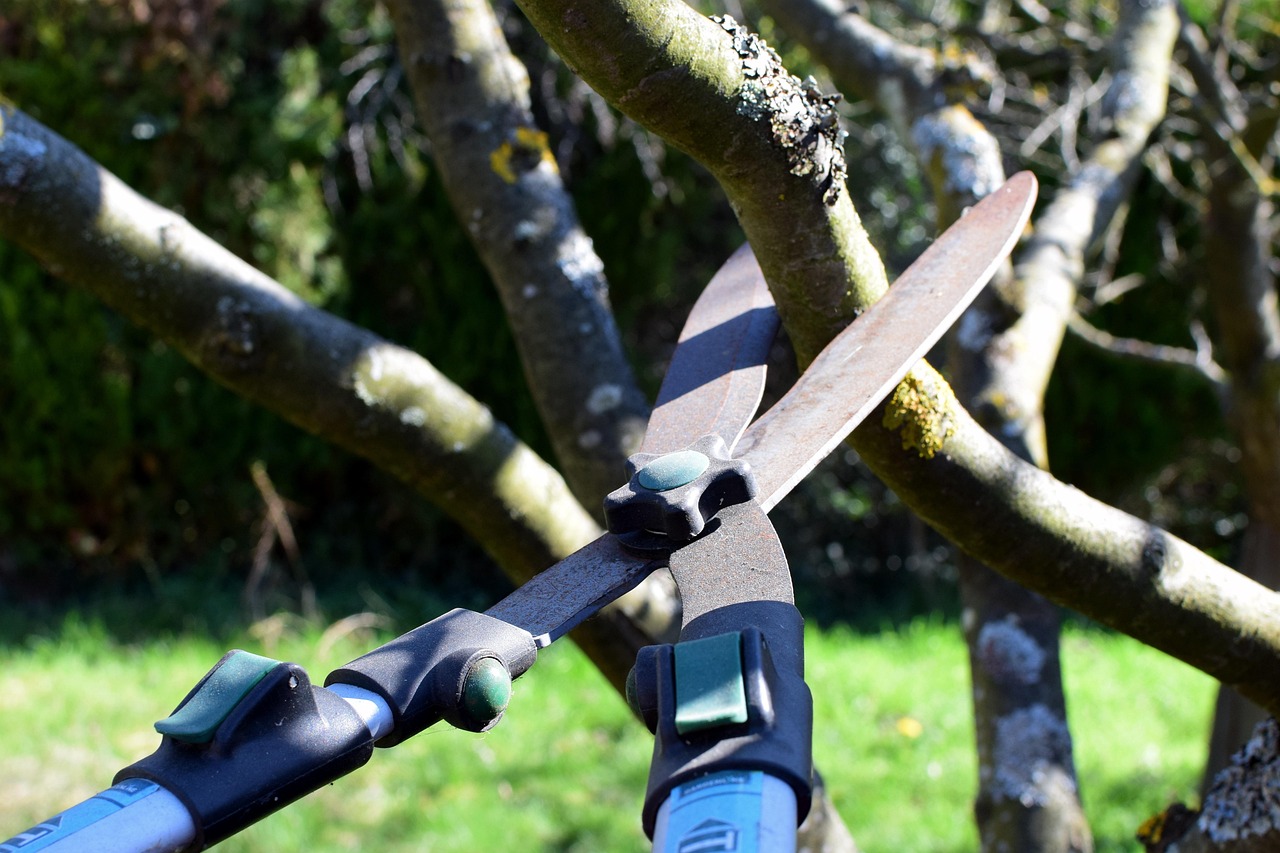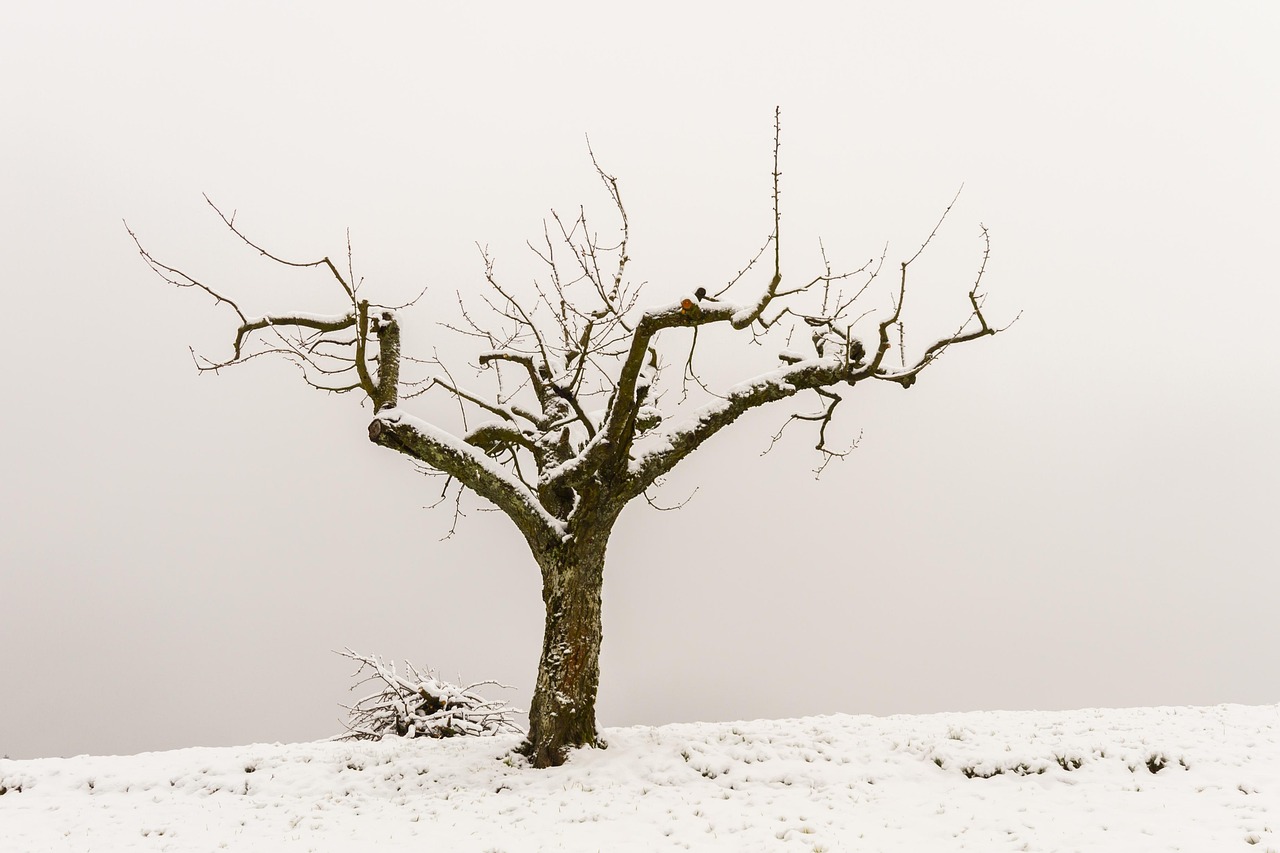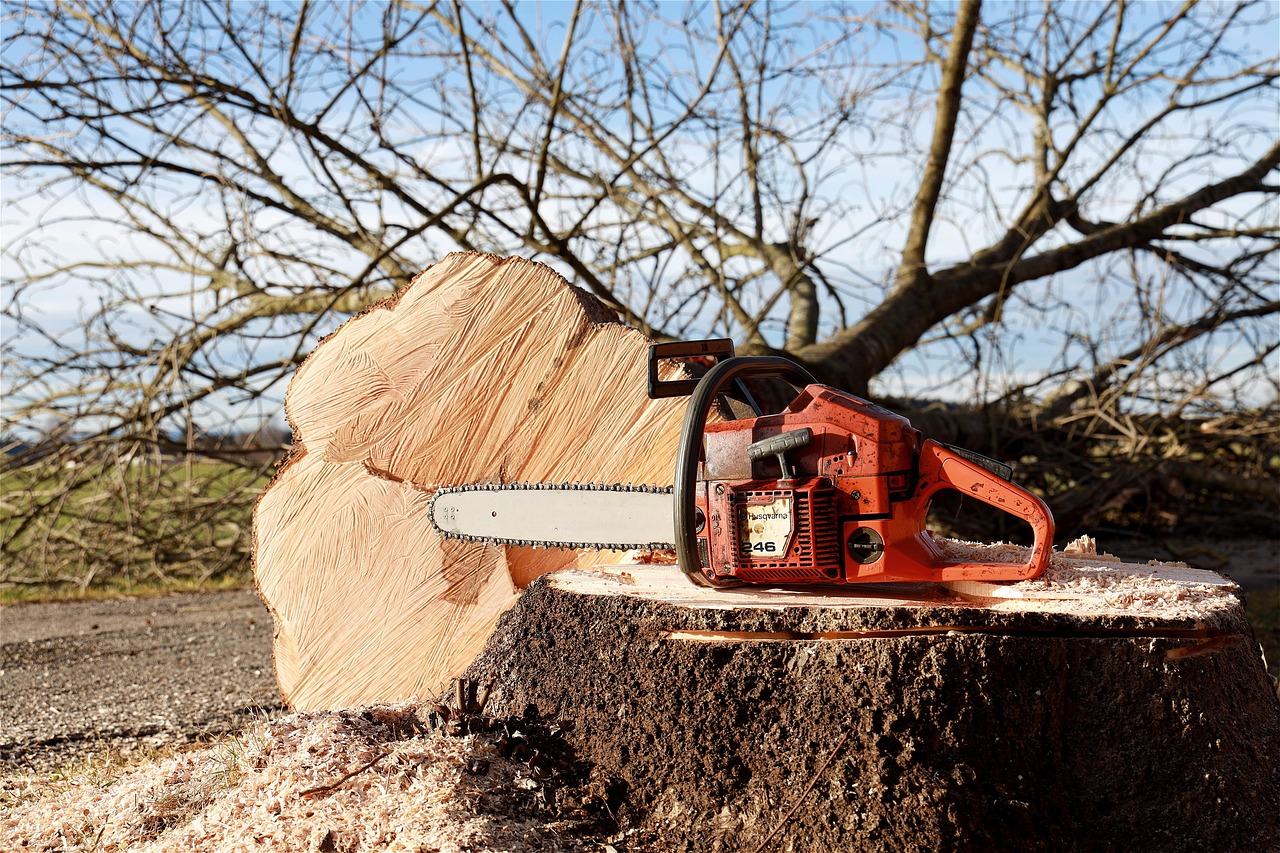Pruning trees in narrow urban spaces requires careful planning and technique. Focus on removing dead or damaged branches, maintaining a balanced canopy, and ensuring adequate clearance from structures and pedestrians. Proper timing and tools also play a crucial role in promoting the health and aesthetics of urban trees.
Urban environments present unique challenges for tree care. Limited space, overhead wires, and nearby buildings often restrict growth. Trees must adapt to these conditions, which sometimes leads to uneven growth patterns. Pruning is essential to manage these issues effectively. It not only helps maintain the tree’s health but also enhances safety and aesthetics.

Understanding the basics of tree pruning is crucial for anyone looking to care for trees in narrow urban spaces. Correct pruning techniques can prevent damage to the tree while promoting healthy growth. Here are some key benefits of pruning:
- Improves overall tree health
- Enhances safety by reducing hazards
- Increases light and air penetration
- Encourages new growth
- Maintains structural integrity
Understanding Pruning Techniques
When it comes to pruning, there are several techniques that are particularly effective for trees in constrained areas. Each technique serves a specific purpose and can be adapted to the unique environment of urban spaces.
Crown Thinning
Crown thinning involves selectively removing branches throughout the tree’s canopy. This technique allows light to penetrate more easily and promotes air circulation. It can reduce weight on heavy branches, helping to prevent breakage during storms. Crown thinning is often recommended for trees that have dense foliage.

Crown Raising
Crown raising is the practice of removing lower branches to create vertical clearance. This is especially important in urban areas where pedestrian traffic is high. By raising the crown, you ensure that branches do not obstruct walkways or interfere with buildings and vehicles.
Crown Reduction
Crown reduction is used to decrease the size of the tree without harming its health. This technique involves cutting back the length of branches while preserving the tree’s natural shape. It is useful for managing trees that have outgrown their space or are too close to structures.
Best Practices for Pruning Trees in Urban Areas
Pruning trees in urban settings requires a systematic approach. Here are some best practices to follow:

- Always use clean, sharp tools to make smooth cuts.
- Remove dead or diseased branches first to prevent the spread of disease.
- Avoid excessive pruning, which can stress the tree.
- Prune at the right time of year; late winter or early spring are generally best.
- Consult local guidelines or a certified arborist if unsure about techniques.
Tools and Equipment for Pruning
The right tools are essential for effective tree pruning. Here are some commonly used tools:
| Tool | Description |
|---|---|
| Hand Pruner | Ideal for small branches up to ¾ inch thick. |
| Loppers | Used for larger branches up to 1½ inches thick; provides more leverage. |
| Saw | Best for cutting larger branches; choose a pruning saw for better control. |
| Pole Saw | A long pole with a saw at the end, helpful for reaching high branches. |
| Safety Gear | Includes gloves, goggles, and hard hats to protect against falling debris. |
Using the right tools not only makes pruning easier but also helps ensure safety. Always prioritize safety when working with trees, especially in urban settings where obstacles may be present.
In addition to using proper techniques and tools, understanding tree biology is vital. Different species have unique growth patterns and responses to pruning. It’s important to research or consult with an expert about the specific types of trees you are working with.

By combining effective techniques with the right tools and knowledge about tree biology, you can successfully prune trees even in narrow urban spaces. This not only contributes to the beauty of the city but also supports the ecological health of urban environments.
Timing Your Pruning Efforts
Timing is a critical factor in the success of tree pruning, especially in urban settings. Pruning at the right time can significantly enhance the tree’s health and growth. Here are some key considerations for timing your pruning efforts:
Seasonal Considerations
Different seasons provide various benefits for pruning. Understanding when to prune can lead to healthier trees. The following table outlines seasonal guidelines:
| Season | Best Practices |
|---|---|
| Late Winter/Early Spring | Ideal for most deciduous trees before new growth starts. |
| Summer | Good for minor pruning and shaping trees; can help control growth. |
| Fall | Avoid heavy pruning; trees are preparing for dormancy and may be stressed. |
| After Flowering | Prune flowering trees after they bloom to avoid cutting off buds. |
Pruning during the right season allows trees to heal quickly and reduces the risk of disease. Always consider the specific species and local climate when planning your pruning schedule.
Factors Influencing Timing
Several factors influence the best time to prune, including:
- Tree Species: Different species have varying growth patterns and dormancy periods.
- Local Climate: Weather conditions can affect tree health and growth cycles.
- Pest and Disease Issues: Trees showing signs of pests or disease may need immediate attention regardless of season.
Choosing the Right Pruning Technique for Different Tree Types
Not all trees require the same pruning techniques. Each species has its own characteristics that dictate the best approach. Understanding these differences ensures effective pruning that supports healthy growth.
Deciduous Trees
Deciduous trees, which lose their leaves in winter, often benefit from crown thinning and raising techniques. Here are some popular deciduous species and their preferred techniques:
- Maple: Best pruned in late winter to early spring; focus on thinning for better light penetration.
- Oak: Prune in late winter; avoid pruning during the growing season to prevent oak wilt disease.
- Birch: Prune in late winter as well; they bleed sap if pruned too early in the spring.
Evergreen Trees
Evergreens retain their foliage year-round, requiring different techniques. These trees are often pruned for shaping and reducing size:
- Pine: Prune in late winter or early spring; avoid removing more than one-third of the tree’s foliage at once.
- Spruce: Best pruned in late spring after new growth appears; shaping helps maintain a balanced appearance.
- Cedar: Can be pruned lightly throughout the year; avoid heavy pruning in late summer.
Common Mistakes to Avoid While Pruning
Avoiding common mistakes is essential for effective tree pruning. Missteps can harm the tree and result in undesirable growth patterns. Here are some frequent pitfalls:
- Over-Pruning: Removing too much foliage can stress the tree and hinder growth.
- Poor Cutting Techniques: Making improper cuts can damage branches and lead to rot.
- Ignoring Tree Species Needs: Failing to consider specific species requirements can result in ineffective pruning.
- Pruning at the Wrong Time: Cutting during inappropriate seasons can expose trees to diseases and pests.
Recognizing these common mistakes will help you achieve better results and maintain healthier trees in urban environments.
The Role of Professional Arborists
If you feel unsure about your ability to prune effectively, consider hiring a professional arborist. Certified arborists have training and experience that can make a significant difference. Here are some advantages of working with professionals:
- Expertise: Arborists understand tree biology and can make informed decisions about pruning techniques.
- Safety: Professionals are trained to work safely, minimizing risks associated with pruning large or awkwardly positioned trees.
- Proper Equipment: Arborists have access to specialized tools that ensure clean cuts and reduce damage.
- Health Assessment: They can identify diseases, pests, or structural issues that may require attention beyond simple pruning.
Selecting a qualified arborist ensures your trees receive the best care possible while maintaining safety and health standards.
Maintaining Urban Trees Post-Pruning
Once you have pruned your trees, ongoing maintenance is essential for their health and vitality. Urban trees often face unique stresses, including pollution, limited soil space, and competition for resources. Implementing proper care after pruning can enhance recovery and promote growth.
Watering Techniques
Watering is vital after pruning. Proper hydration supports the tree’s recovery process. Consider the following watering techniques:
- Deep Watering: Apply water slowly and deeply to encourage root growth. This technique allows moisture to penetrate deeper into the soil.
- Soaker Hoses: Utilize soaker hoses to provide consistent moisture without over-saturating the surface.
- Mulching: Add a layer of mulch around the base of the tree to retain moisture and regulate soil temperature.
Regularly check the soil moisture level, especially during dry spells. Over-watering can be just as harmful as under-watering, leading to root rot or other issues.
Nutritional Needs
After pruning, trees may benefit from additional nutrients to support new growth. Here are some key considerations:
- Fertilization: Use a balanced fertilizer in early spring, ensuring it is appropriate for the tree species. Organic options, such as compost or well-rotted manure, can also be beneficial.
- Soil Testing: Conduct soil tests to determine nutrient levels and pH balance. This information helps guide your fertilization strategy.
- Adding Organic Matter: Incorporate organic matter into the soil to improve its structure and nutrient content.
Pest and Disease Management
Urban trees are often more susceptible to pests and diseases due to environmental stressors. Monitoring and managing these threats is crucial for maintaining healthy trees. Here are some strategies:
Regular Inspections
Conduct regular visual inspections of your trees. Look for signs of pests or disease, such as:
- Discolored leaves or premature leaf drop
- Visible insects or webs on branches and leaves
- Unusual growths, such as galls or cankers
Catching issues early can make treatment more effective.
Pest Control Methods
If you identify pests, consider these control methods:
- Natural Predators: Encourage beneficial insects like ladybugs and lacewings that feed on harmful pests.
- Insecticidal Soaps: Use these soaps to target soft-bodied insects without harming beneficial organisms.
- Neem Oil: A natural pesticide that can help control various pests while being relatively safe for the environment.
Disease Prevention
Preventative measures are essential for minimizing disease risks. Implement the following strategies:
- Proper Pruning Techniques: Avoid creating wounds that can harbor pathogens; clean cuts promote quicker healing.
- Avoid Overcrowding: Ensure adequate spacing between trees to improve air circulation and reduce humidity levels.
- Sanitation: Clean up fallen leaves and debris around the base of the tree to eliminate potential disease carriers.
The Importance of Tree Canopy Management
Managing the canopy of urban trees is critical for enhancing aesthetics and ensuring safety. A well-maintained canopy can also improve air quality and provide shade in urban environments. Here are some essential aspects of canopy management:
Canopy Shaping
Shaping the canopy involves maintaining a balanced form that allows sufficient light penetration. Consider these tips:
- Avoid Topping: Topping trees can lead to weak regrowth and increased susceptibility to pests and diseases.
- Selective Pruning: Remove specific branches to reduce density while preserving the tree’s natural shape.
- Monitor Growth Patterns: Regularly assess the canopy’s growth to identify areas that may need adjustment.
Height Management
In urban settings, managing tree height is crucial to avoid interference with power lines and buildings. Techniques include:
- Crown Reduction: Reduce the height of the tree without compromising its health.
- Regular Maintenance Pruning: Conduct periodic pruning to control growth and ensure clearances are maintained.
Community Engagement in Urban Tree Care
Community involvement plays a vital role in the health and sustainability of urban trees. Engaging local residents can foster a sense of ownership and responsibility for green spaces. Here are some ways to encourage community participation:
- Educational Workshops: Organize workshops on tree care, pruning techniques, and pest management.
- Volunteer Planting Days: Schedule events where community members can help plant new trees or care for existing ones.
- Create Tree Adoption Programs: Allow residents to adopt trees in their neighborhoods, fostering a sense of stewardship.
By promoting community engagement, urban areas can enhance their green spaces, making them more vibrant and healthier for all residents.
Addressing Challenges in Urban Tree Pruning
Tree pruning in narrow urban spaces comes with its own set of challenges. Urban environments often present unique obstacles that can make tree care more complex. Understanding these challenges is essential for effective management and maintenance of urban trees.
Space Limitations
Narrow urban spaces can restrict the growth of trees, leading to challenges such as:
- Crowding: Trees may compete for sunlight and nutrients, which can lead to weak growth and increased susceptibility to pests.
- Root Conflicts: Limited soil space can hinder root development, making trees more vulnerable to environmental stress.
- Structural Constraints: Proximity to buildings, sidewalks, and power lines may require frequent pruning to maintain clearance and safety.
To mitigate these issues, urban planners and gardeners should consider selecting tree species that are well-suited for confined spaces and have a slower growth rate.
Environmental Stressors
Urban trees also face various environmental stressors that can impact their health. Common stressors include:
- Pollution: Air and soil pollution can adversely affect tree health, leading to poor growth and increased disease susceptibility.
- Soil Compaction: Heavy foot traffic and construction activities can compact soil, hindering root development and water infiltration.
- Water Availability: Urban trees may not receive adequate water due to limited rainfall and competition for resources from surrounding infrastructure.
Implementing strategies such as using permeable paving and creating rain gardens can help improve water availability and soil quality for urban trees.
The Role of Technology in Urban Tree Care
Technology plays an increasingly important role in managing urban trees. Innovations can help streamline tree care processes and improve overall outcomes. Some notable advancements include:
Tree Management Software
Many municipalities are adopting software solutions to assist in tree inventory management. These programs enable users to:
- Track tree health and maintenance schedules
- Monitor pest outbreaks and disease management efforts
- Analyze data to optimize tree planting strategies
Drones for Aerial Assessment
Drones can provide aerial views of urban tree canopies, allowing arborists to assess tree health from above. Benefits include:
- Efficient identification of problem areas within large urban forests
- Enhanced monitoring of tree growth and canopy density
- Reduced time spent on ground inspections
Sensors for Soil Monitoring
Soil sensors can help monitor moisture levels, temperature, and nutrient content. This data can inform watering schedules and fertilization needs, ensuring optimal growing conditions for urban trees.
Final Thoughts
Caring for trees in narrow urban spaces requires a thoughtful approach that balances aesthetics, safety, and health. Pruning is a crucial aspect of this care, ensuring that trees remain healthy while adapting to their environment. Understanding the best practices for pruning, timing, and ongoing maintenance will lead to more resilient urban forests.
Moreover, engaging the community in tree stewardship creates a sense of ownership and pride in local green spaces. By working together, residents can contribute to the sustainability of their neighborhoods, fostering a deeper connection with nature.
As we embrace technology and innovative strategies, the future of urban tree care looks promising. By leveraging these tools, we can better manage our urban forests, ensuring they thrive despite the challenges posed by city living. Ultimately, maintaining healthy trees enhances our urban landscapes, improves air quality, and provides essential benefits to residents.
The importance of trees in urban settings cannot be understated. Through strategic pruning and community engagement, we can create vibrant green spaces that contribute positively to both the environment and the quality of life for urban dwellers.
